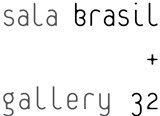 |
‘ photographic print on cotton paper | 110 x 165 cm photo: Pablo Vilar, courtesy Zipper Galeria, São Paulo |
The Embassy of Brazil in London, in collaboration with Zipper Galeria, proudly presents 'Estela Sokol: Secret Forest'. The show, which is the first solo presentation of the artist’s work in the UK, includes a selection of recent sculptures and installations, as well as a series of previously unseen photographs.
Part of a generation of up-and-coming artists working in São Paulo today, Estela Sokol works on the expansion of the traditional idea of the work of art as the container of colour and form – in Sokol’s work, the environment around the work of art is also charged with colour and energy, through the artist’s use of materials and manipulation of scale. According to the artist, ‘problems appear and are solved in the very act of making things’. There is no inspiration from any mysterious source, there is no creative force detached from the direct manipulation of materials, colour and light. The idea is, therefore, not simply attached to the work but is born out of it, it buds from the construction of form.
 |
‘Ofélias’ (Ophelias), 2010 | PVC, Plexiglas | 150 x 500 x 64 cm photo: Pablo Vilar, courtesy Zipper Galeria, São Paulo |
The reduced dimensions of these objects, presented in the exhibition in great number, additionally suggest a notion of ‘lesser art’, of handicraft, whilst the repetition of the objects, that differ from each other in minute details, combined with the use of materials such as plastic, acrylic, synthetic varnish and automotive rubber coating reminds us of industrial processes. The synthesis of industrialisation, handicraft and visual arts clamours for a reading linked to Bauhaus. These objects invoke famous images of constructive art, and the way in which they are installed creates a simulation of the artist’s own studio in São Paulo, an experimental laboratory in light-colour lined with pieces that leave traces of colour on the white walls.
 |
partial view of the artist’s studio, photo: Pablo Vilar, courtesy the artist |
The exhibition has been made possible by support from the Brazilian Ministry of Foreign Affairs, Zipper Galeria (São Paulo, Brazil) and Galerie Wuensch (Linz, Austria).
Estela Sokol was born in 1979 in São Paulo, where she lives and works. In 2002, she graduated in Printmaking from Centro Universitário Belas Artes, São Paulo.
Recent solo exhibitions include Licht Konkret, Galerie Wuensch, Linz, Austria (2011); Clarabóia, Paço das Artes, São Paulo, Brazil (2010); Dawn for Interiors, Bisagra Arte Contemporáneo, Buenos Aires, Argentina (2010); Sol de Inverno, Palácio das Artes, Belo
Horizonte, Brazil (2008); Halo, Galeria Virgílio, São Paulo, Brazil (2007); Meio Dia e Meia, Centro Universitário Maria Antonia, São Paulo, Brazil (2006); Lastro, Centro Cultural São Paulo, Brazil, (2003). Future solo exhibitions include Polarlicht, Bisagra Arte Contemporáneo, Buenos Aires, Argentina (2011) and A Morte das Ofélias, Galeria Anita Schwartz, Rio de Janeiro, Brazil (2011), as well as a participation in the III Bienal del Fin del Mundo, Ushuaia, Argentina (2011).
Selected group exhibitions: Light Art Bienalle, Linz, Austria (2010); Silêncio, Zipper Galeria, São Paulo, Brazil (2010); Trajetórias em Processo, Galeria Anita Schwartz, Rio de Janeiro, Brazil (2009); Nova Arte Nova, Centro Cultural Banco do Brasil, Rio de Janeiro and São Paulo, Brazil (2009).
Awards: Brasil Arte Contemporânea, Fundação Bienal São Paulo, Brazil (2010); Temporada de Projetos Paço das Artes, São Paulo, Brazil (2009); Edital Revelação MACC, São Paulo, Brazil (2004); Projéteis FUNARTE de Arte Contemporânea, Rio de Janeiro, Brazil (2005) and 34° Salão de Arte Contemporânea Luiz Sacilotto, São Paulo, Brazil (2006).
View full press release
Download press images






No comments:
Post a Comment